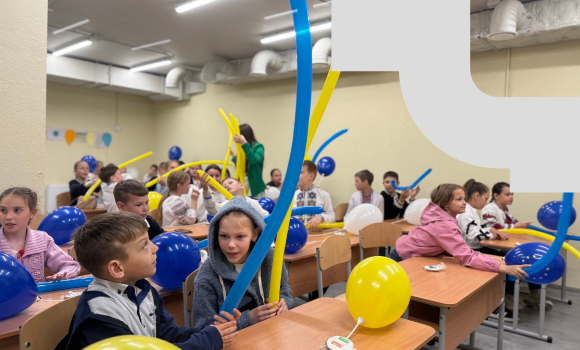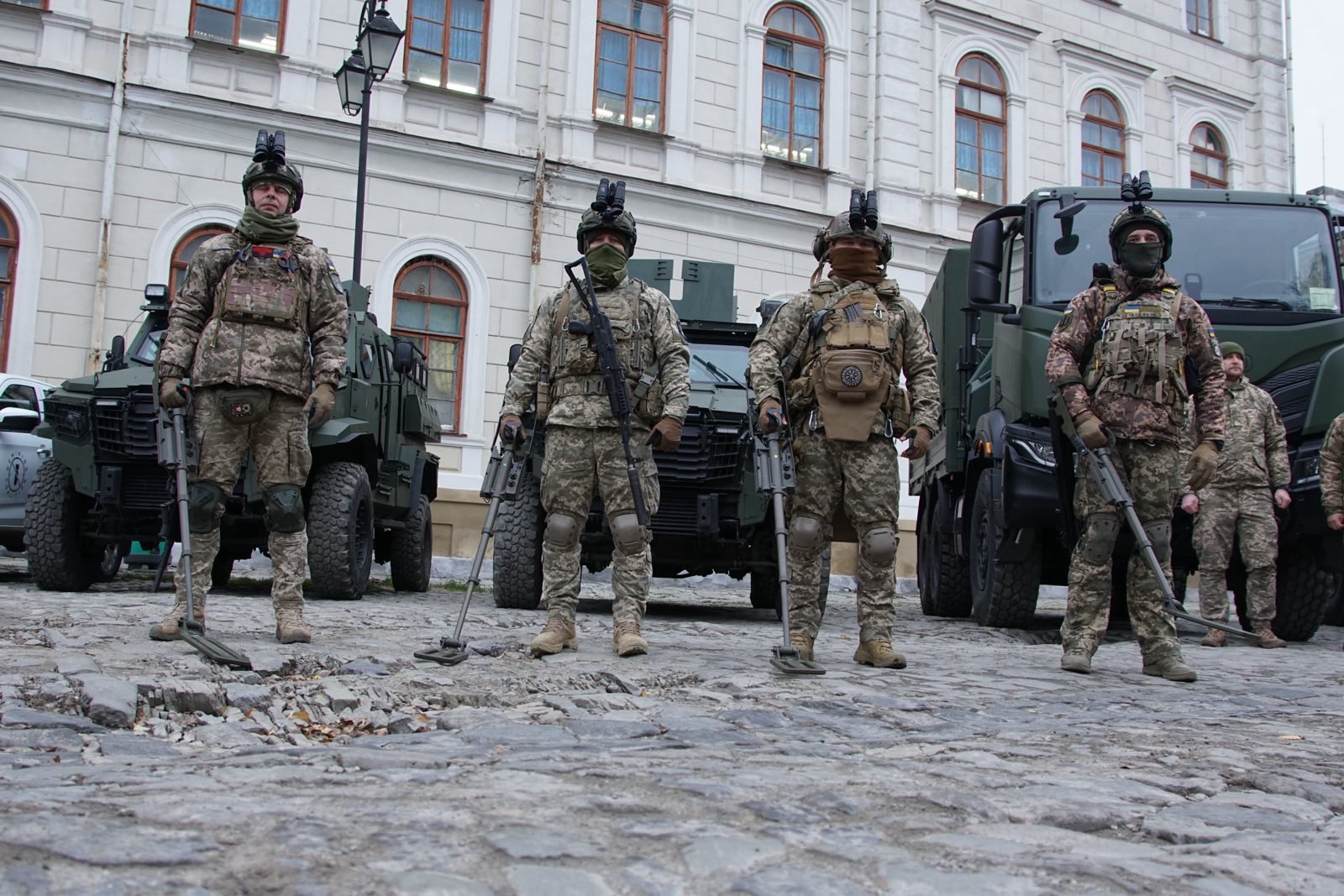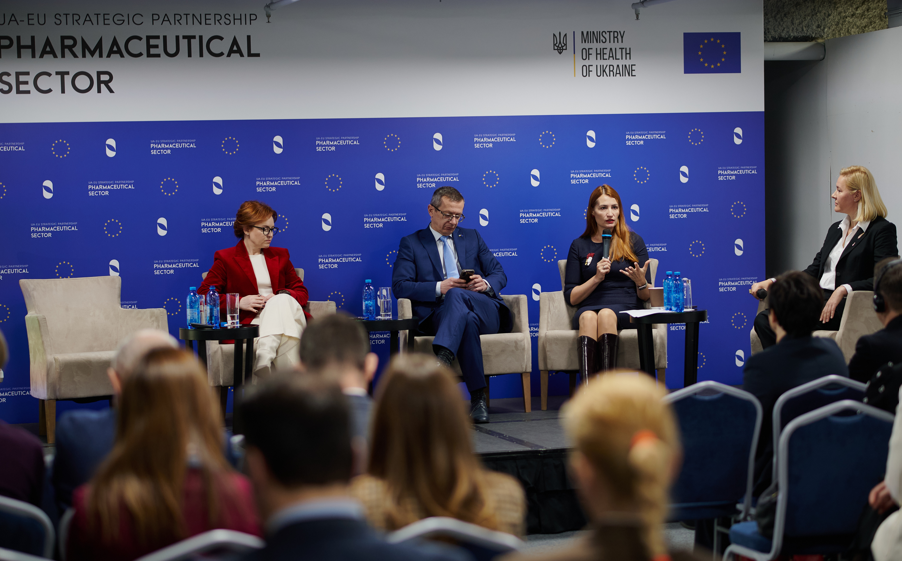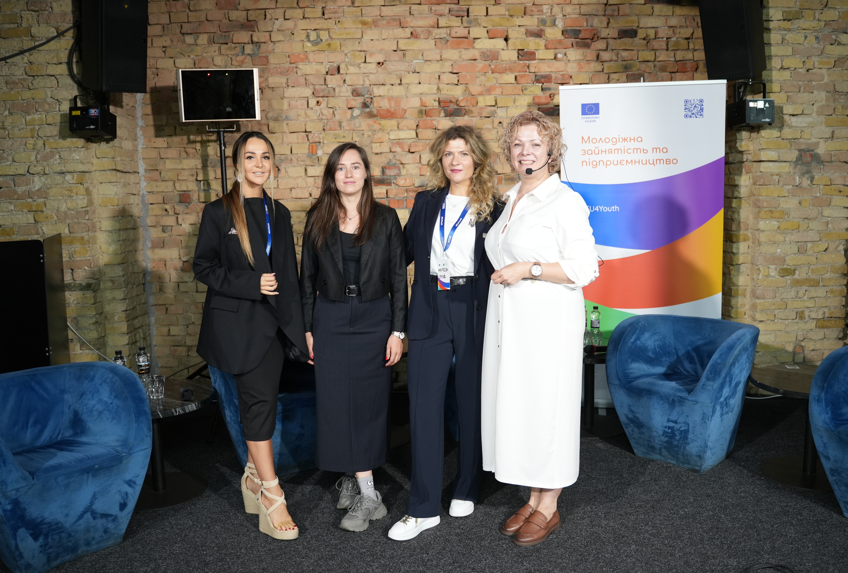For three and a half years, Ukrainian children have lived with the daily reality of war. Schools and kindergartens – places that should be the safest for children – have often become targets of enemy attacks. Since the start of the war, more than 3,000 schools have been destroyed or damaged, and around 900,000 children have been forced into remote learning. To help as many children as possible return to classrooms, Lithuania and its partners are implementing the Shelters for Educational Institutions in Ukraine programme.
To mark the 10th anniversary of the Sustainable Development Agenda, the Central Project Management Agency (CPVA) is sharing stories of change to highlight how Lithuanian knowledge and expertise contribute to positive change around the world—and to remind that lasting global change is only possible when we work together.
“When you are actually there, hearing Shahed drones overhead, you begin to understand their daily reality – rushing into shelters and spending six to eight hours underground. That’s when you realize that what we’re doing is the very least we can contribute in such a difficult time,” says Aurima Lasickienė, Group Leader at CPVA’s Ukraine and Peace Investment Unit, who coordinates this programme.
A remote-learning generation
At the start of the war, Ukraine made a difficult but necessary decision: schools could only operate if they had a shelter. Even a basement could suitable, but it had to meet strict safety standards.
“At the beginning of the war, there were almost no such shelters,” explains Lasickienė. “Basements were quickly repaired so at least some schools could stay open. Where possible, students returned to classrooms. But soon schools themselves became deliberate targets – missiles reduced them to ruins, forcing children back into remote learning.”
This reality is especially harsh considering that before the war, Ukraine had already endured two years of pandemic restrictions. Many of today’s fifth graders have never actually sat in a classroom.
“It’s a generation that doesn’t know what it means to sit at a desk, interact with classmates, or learn together,” notes Lasickienė.
According to CPVA, this has already had an impact: PISA studies show that the results of Ukrainian students are declining, especially in remote regions. Distance learning helps keep education going, but it cannot replace face-to-face interaction.
“We are proud of this programme, but it’s heartbreaking,” Lasickienė adds. “In the 21st century, we should be building schools and kindergartens – not underground shelters. But today, there is no other option. Our goal is to make these shelters not just places of refuge during air raids, but fully functional underground schools where children can learn, create, and play – both in wartime and in peace.”
Schools chosen in frontline regions
From the start, the programme focused not on repairing basements, but on building entirely new shelters at schools that remain closed only because they lack a safe space for children.
Ukraine’s Ministry of Education has been a key partner, helping to identify schools in need.
“The Ministry gave us a list of 30 schools, but due to budget limits, we could choose only six,” Lasickienė explains. “Priority was given to frontline areas – Sumy, Zaporizhzhia, Chernihiv, Odesa, Kharkiv, and Mykolaiv. The condition was that the school itself was not destroyed and could reopen once a shelter was built. We also looked at whether enough children and teachers were still in the area, and whether construction was technically feasible.”
The selection process involved Ukrainian education experts, direct consultations with schools, and even site visits. Once schools were selected, construction began.
Building shelters in wartime
The first shelter, located in Molodizhne, Odesa region, was completed in just 11 months and can safely accommodate 780 children. It opened this April and is one of the first of its kind in the region.
“In Odesa, autumn brought especially intense attacks, with frequent electricity blackouts. Sometimes electricity was available only three hours a day. On top of that, two of the construction brigades working on our shelter were drafted into the army,” recalls Lasickienė.
Despite these difficulties, parents and teachers closely followed progress. When the shelter opened, the response was overwhelming:
“For us, this is not just a shelter – it’s a school. Cozy, bright, and safe,” said teachers and parents. The principal added that during the last-bell celebration, students asked to hold it inside the shelter rather than in the school building. “They wanted to celebrate in the new space, because it is modern, welcoming, and above all – safe.”
Currently, shelters are being built in Mykolaiv and Chernihiv, while projects for Zaporizhzhia and Kharkiv (each for 500 students) are being finalized. In Sumy, where the situation is extreme this time, a construction contract has already been signed, and the works will proceed.
UNICEF and Ukraine’s Ministry of Education have greatly supported the process by preparing standard designs for shelters of various sizes (200–1000 places). Usually, preparing a single technical design project takes at least six months. With these designs, adaptation to local needs takes only three to four months.
Shelters for learning, playing, and growing
Ukrainian regulations require each child to have a set amount of space in the shelter, with different standards for younger and older students. As a result, the shelters include classrooms, recreation areas, and even sleeping spaces for younger children.
The Molodizhne shelter, for example, spans 2,200 square meters and includes 24 classrooms. In Chernihiv, an even larger project is underway – a 1,000-seat shelter covering 3,000 square meters.
“These shelters are designed for dual use,” Lasickienė emphasizes. “They not only protect children during attacks, but also let them live normal life – studying, playing, exercising, and creating. And when peace returns, they will serve as spaces for extracurricular activities, sports, and community life.”
Programme expansion
To ensure sustainability, solar panels are being installed on schools where shelters are built, reducing electricity costs and making the facilities easier to maintain.
In Molodizhne, Lithuania, and Taiwan have launched another initiative – Improving Students’ Learning Outcomes in Ukraine. It will support students with lower achievements with “catch-up” classes in Ukrainian, history, math, and English, while also offering STEAM opportunities for gifted children.
Meanwhile, international cooperation of this programme is scaled up. Finland and Ukraine have signed an agreement to establish a “Shelter Coalition”.
“Finland, with its strong expertise in civil protection, took responsibility on the ‘soft’ side of the project – sharing knowledge with Ukraine. After visiting Molodizhne, they entrusted the ‘hard’ side – the construction of around 20 new shelters – to us and our Belgian partners,” says Lasickienė.
The New bomb shelters for Ukraine’s school programme is funded by the European Union (€15 million), Lithuania (€0.5 million), and the Government of Ireland (€3 million). It is scheduled to be completed by the end of 2026.








